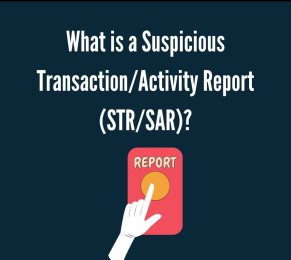
The Mystery: Suspicious Transactions and How They Get Caught ??
- The Mystery: Suspicious Transactions and How They Get Caught ?
Have you ever wondered how banks and other financial institutions keep an eye out for fishy transactions? Well, that’s where Suspicious Transaction/Activity Reports (STR/SAR) come in! They’re like red flags waved at authorities when something seems suspicious in the financial world.
Imagine a high school student suddenly depositing a million bucks into their account. That would definitely raise some eyebrows, right? That’s exactly what STR/SARs are for – catching transactions that don’t fit the usual pattern and could be linked to illegal activities like money laundering or terrorist financing.
Is it mandatory to report these suspicious transactions? Absolutely! Financial institutions and other regulated entities, like casinos, are legally obligated to file STR/SARs under Anti-Money Laundering/Combating the Financing of Terrorism (AML/CFT) regulations. Think of it as a superhero’s responsibility to keep the financial world safe!
So, what exactly makes a transaction suspicious? It can be a combination of things:
* Criminal Typology: This sounds fancy, but it basically means the transaction matches a known pattern used by criminals to clean dirty money. Imagine a bunch of small, seemingly random deposits adding up to a large sum – that could be a red flag.
* Customer Profile Mismatch: Let’s say a grandma known for knitting suddenly starts wiring large sums overseas. That wouldn’t be typical, would it? This inconsistency can trigger an investigation.
* Legitimacy Concerns: If the source of funds seems unclear or suspicious, it raises red flags. For example, if someone deposits a bunch of cash in worn envelopes every week, that might warrant a closer look.
But how do they catch these suspicious transactions? It’s a team effort! Here’s the breakdown:
1. Frontline Staff: Think bank tellers and customer service reps. They’re trained to spot red flags based on customer profiles and known patterns of criminal activity. Just like superheroes have their sixth sense, these guys develop a sharp eye for fishy transactions!
2. Investigation: If something seems off, the frontline employee digs deeper to understand the transaction’s nature and context. Imagine them putting on their detective hats and asking questions to get the whole picture. ?
3. Reporting to the AML Officer: If suspicion lingers, the employee reports it to the Anti-Money Laundering officer, kind of like calling in the big guns!
4. Further Investigation and Filing the STR/SAR: The AML officer investigates further and decides if there’s enough evidence to file an official STR/SAR with the Financial Intelligence Unit (FIU). Think of the FIU as the headquarters where all the red flags are collected and analyzed.
Ignoring these red flags can have serious consequences! Not filing an STR/SAR is a breach of AML/CFT laws and can lead to hefty fines and even legal trouble. Remember, with great financial power comes great responsibility!
Real-World Example: Just recently, the Monetary Authority of Singapore (MAS) fined a financial institution a whopping S$2.5 million for failing to report suspicious transactions! This shows that regulators take STR/SAR reporting very seriously. Don’t mess with the financial watchdogs!
Remember, a strong financial system relies on catching suspicious activity early on. So, the next time you hear about STR/SARs, think of them as the silent superheroes keeping our financial world safe
Adv. Yogesh Pandey
+91-7798800030
Cyber??Block????3?Tech







